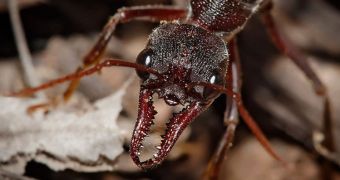In a new set of investigation, researchers looked at how very small ant colonies, containing on average just about 200 members, choose a new home when their old one is destroyed. The team learned that there is no single ant that calls the shots, and that the decisions are taken by the collective intelligence.
These social insects have fascinated scientists for decades, as they have remarkable hierarchical structures, as well as social behavior that closely resembles our own.
The level of cooperation that is encountered in an ant nest can rarely be seen in other species, except perhaps in related creatures such as termites. The gigantic nests that some ant species dig tens of feet underground are a direct evidence of that.
In the new research, experts at the Arizona State University (ASU) wanted to determine how decisions are made inside the colony, when issues that concern all members are at stake.
The group found out that the collective intelligence is spread out throughout the group of worker ants, and that there is no single individual, or specialized group of ants, that make the decisions.
The investigation was led by ASU Center for Social Dynamics and Complexity core faculty member Stephen Pratt, who is also a member of the Consortium for Biosocial Complex System at the university.
The expert explains that queen ants, which popular culture have as the leaders of all ant colonies, do not play a role in the selection of a new home, but rather act simply as the reproductive system for the colony, serving the common good.
“Ants have to reach a consensus if they want to move the colony to a different location. There are a few key ingredients to how they do this,” says Pratt.
“The main thing is that they have to communicate, and that communication has to say something about how good a site is,” the expert goes on to say.
Pratt also holds an appointment as an associate professor in the ASU College of Liberal Arts and Sciences (CLAS) School of Life Sciences.
The main thing that dictates new nest selection is the series of attributes the site has. When dealing with multiple choice, even few ants can select the best location. This happens regardless of whether all ants have visited all of the sites.
A minority of active “scout” ants is therefore in charge of recruitment at each prospective site, and from this process a consensus emerges, that leads to a decision.
“There is a competition going on here. There are some ants advertising one site and other ants advertising another. The number of ants visiting and advertising is rapidly growing for the good site,” Pratt says.
“The ants essentially ‘vote’ based on the number of ants visiting a site. If the site reaches a quorum, or threshold, they increase the advertising and basically make a higher level of commitment to that site,” the researcher concludes.

 14 DAY TRIAL //
14 DAY TRIAL //